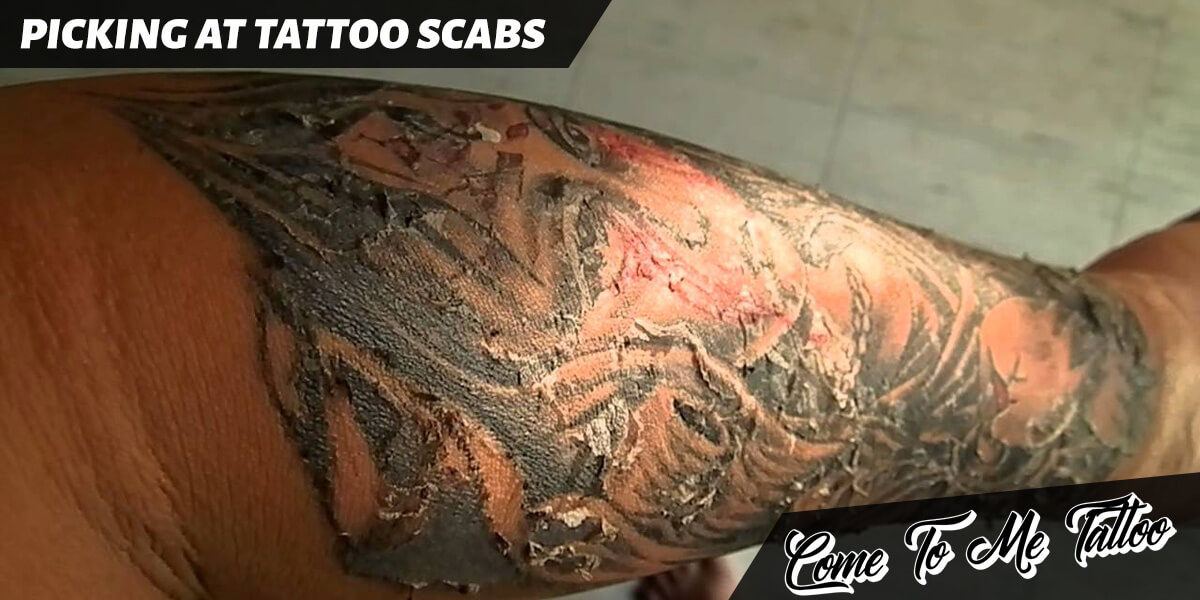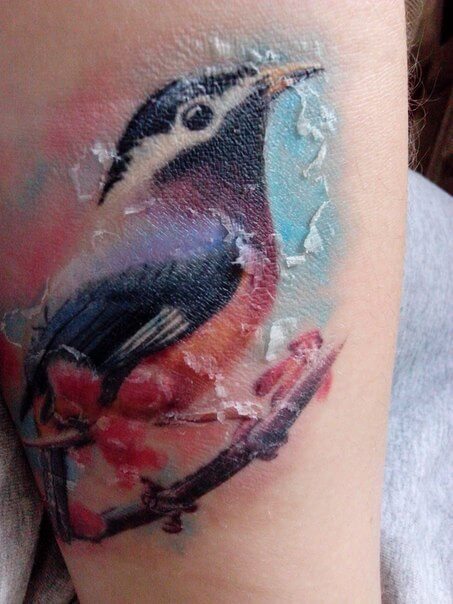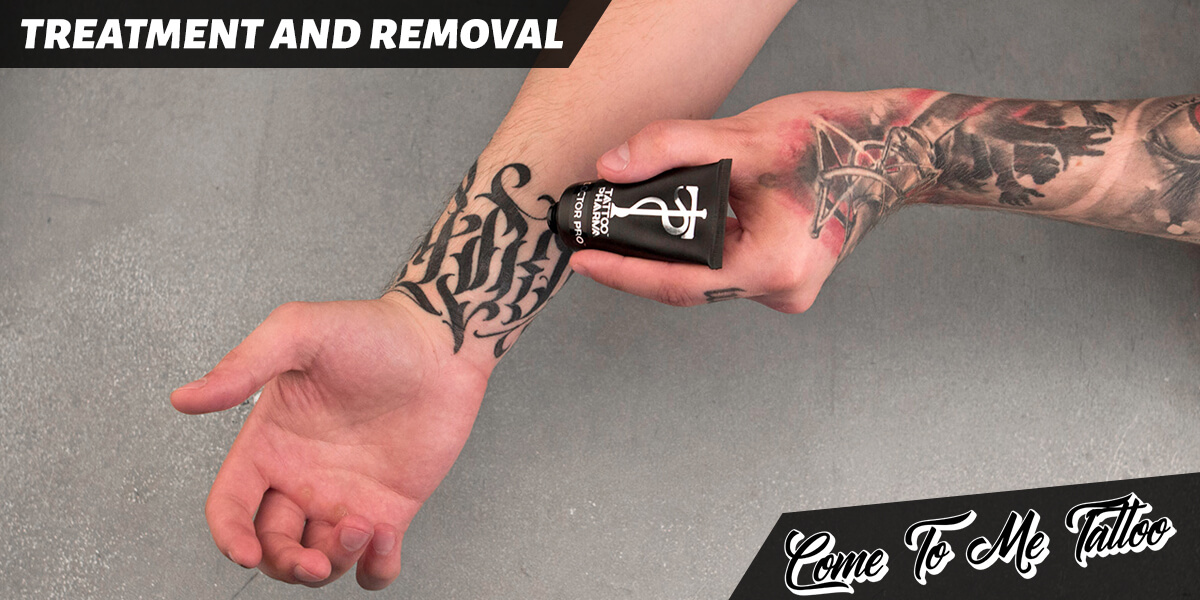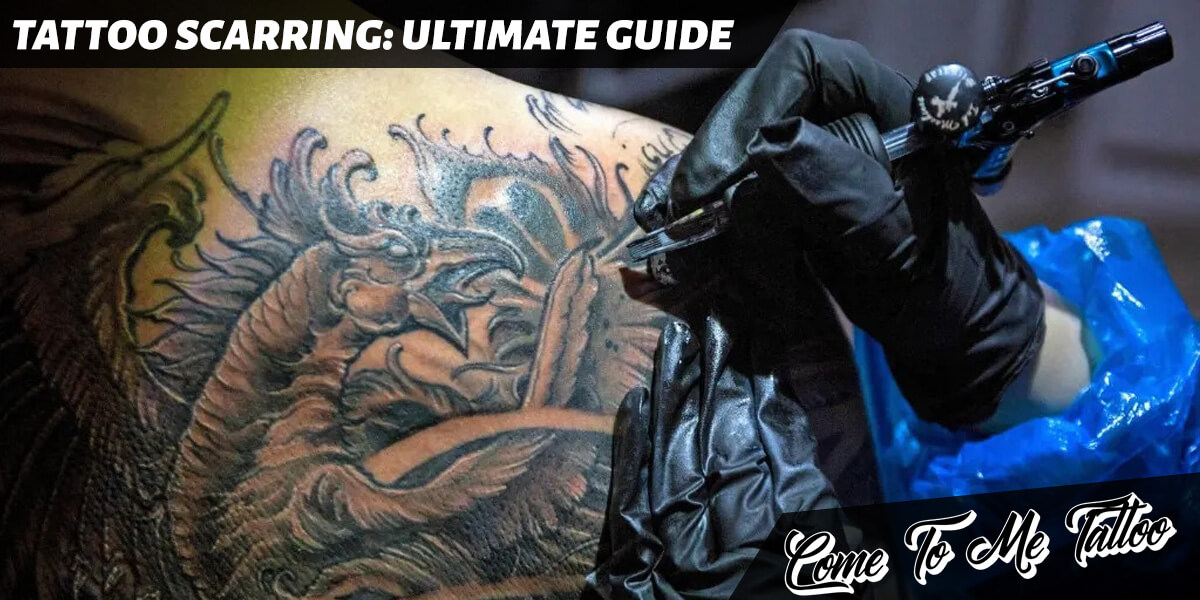Tattoo Scarring: Ultimate Guide
When you get a tattoo for the first time, the area where the bold black lines cut through your skin may be a little reddish, puffy, and even swollen. This is normal and will go away after a few days. However, how long will the raised surface remain? What should you do if scars appear after the tattoo scarring has healed?
In this article, we’ll cover why scars on tattoos can appear, what you can do to minimize scarring when getting a tattoo, and how to care for the area once you have healed.
Why Does Tattooing Sometimes Leave Scars?
The tattoo artist’s needles penetrate the skin thousands of times, leaving behind a trail of ink. If the skin has experienced some level of trauma in the past, scar tissue may form due to repeated needle pricks. Scarring is caused by an open wound- which is what a tattoo essentially is- a wound with ink in it. However, if the scarring on tattoo did not subside on its own, below are some of the causes why that may be happening:
Heavy-handed artist
As we mentioned above, the needle pricks penetrated with ink are what make a tattoo. However, excessive needle pricks can also cause scarring. If your artist is using very aggressive strokes and frequently goes over the same area, again and again, it could lead to increased inflammation in that particular spot and result in more visible scars.
Being too deep in the skin can damage the skin’s surface, resulting in irritated and swollen skin that may turn into a scar down the road. Unfortunately, you may only notice the scarring several weeks later with a bumpy or raised scar that is red in color.
Picking at tattoo scabs

Tattoo peeling is a normal reaction to the ink being injected into the skin. Scabs may also form as your skin heals from this trauma, but it is important to let them heal on their own and not pick at them in order to prevent scarring later on. Picking or scratching at these scabs can cause damage to the site, introducing bacteria and causing an infection that could also lead to scarring.
It’s essential not to interfere with the body in its healing stage and let the tattoo heal naturally. This process may take up to several weeks, depending on your body’s ability to repair itself and how well you care for the area in terms of cleaning and applying ointment, as prescribed by your artist.
Additionally, wearing tight chaffing clothing may cause irritation and further aggravate the tattoo area. So it is important to stick to breathable clothing materials and avoid any unnecessary friction or rubbing on the tattoo.
Overworked scar
The tattoo should be deposited into the dermis layer of the skin and go no deeper. However, if the artist uses excessive pressure while tattooing, they may accidentally penetrate too deep, damaging the surface layer of your skin where scars form. This can lead to raised uneven bumps or exaggerated scarring once the area heals.
An artist may “overworked” the skin by going over the same tattooed area too many times. This can cause blood vessels and capillaries to burst, leading to more inflammation and potential scarring of the area. You may notice the following symptoms associated with skin overworking:
Oozing blood

Blood oozing from a fresh tattoo can be normal and is often seen immediately after the tattooing session. However, if the bleeding does not stop or the area becomes swollen, painful, red or otherwise irritated in any way, it is important to seek medical attention. This may be a sign of an infection and could lead to scarring of the area if left untreated.
Dips and texture change
Scars may look different from the surrounding skin, appearing as dips or indentations in the area. This can indicate that the tattoo will heal with a heavier scar and may require extra measures to reduce its appearance.
Tattoo smudge and blowout

Blowout and smudging can happen when the ink is deposited too shallowly in the skin, making it prone to fading or blurring. This may lead to scarring over time if the area is not properly healed through proper aftercare.
If you are experiencing any of these symptoms, speak with your artist about properly caring for your tattoo and preventing further scarring. Maintaining a healthy lifestyle by eating nutritious foods, getting enough sleep, and staying hydrated can also help support the natural healing process of your skin.
Poor aftercare
Poor aftercare can also exacerbate the risk of scarring in a tattoo. Normally, the artist would prescribe certain ointments or creams to aid the healing process. However, if you fail to follow these recommendations and do not properly take care of your tattoo, the risk of scarring may be much higher. Remember, freshly tattooed skin is much more prone to infection, so it is important to keep it clean and avoid contact with bacteria or other irritants.
Infection
As with any open wound, the risk of infection is always present in a tattoo. If you notice any foul odors, puss-filled blisters, extreme pain or swelling, or other concerning symptoms, seek medical attention immediately. This could be a sign of an infection that requires antibiotics to resolve and prevent further damage to the area.
Some infections will just reveal themselves in the form of dense scars and bumps, while other infections could be more serious and require surgical treatment.
Inability to heal (predisposition scarring)
Predisposition to scarring means that your skin may naturally be more likely to form scars in response to trauma. If you have a history of scarring from other injuries or surgeries, this could make it harder for the tattooed area to heal properly. Your genes may also play a role in your predisposition to scarring because certain genetic factors can affect how your skin responds to inflammation.
Treatment and Removal

Now that you know the risks of tattoo scarring understand that some methods are available to help reduce their appearance. From home remedies to professional skin treatments, there are several ways to minimize and cover up tattoo scarring.
Scar ointment and creams
One of the most effective ways to minimize the appearance of scars is to apply ointments and creams like Bio Oil or Mederma, specially formulated to promote healing. These products can help reduce inflammation, encourage new skin growth, and improve overall skin health.
Aloe vera
Another popular remedy for scarring is aloe vera, which naturally contains anti-inflammatory compounds that can help soothe skin irritation. You can apply it topically by lathering the gel directly on the area or trying aloe vera gels or creams.
Moisturizers
Moisturizing your skin regularly is another key element of reducing the appearance of scars. This keeps your skin hydrated and can help prevent dryness or itchiness that may be caused by scar tissue. Look for products with natural ingredients, like essential oils and plant extracts, to provide added healing benefits.
Tattoo scarring cover-up
Consider getting a tattoo cover-up if your scarring is too severe to be treated with these methods. Many talented artists specialize in concealing or camouflaging scars and other blemishes. It may take multiple sessions to completely transform the area, but this option can be a great way to feel more confident about your appearance and rectify any discoloration, bumps, or unevenness.
Makeup
Makeup is an alternative to covering up tattoos, especially if the scarring is mild. You can use powders or creams to reduce the appearance of redness, dark spots, and uneven texture on the skin. There are also many concealer products specifically designed to hide blemishes and scars.
Does Tattoo Removal Leave Scars?

Most people who undergo tattoo removal report minimal to no scarring. However, it is possible for scars to develop due to the procedure. Factors that may increase your risk of scarring include:
- Extensive tattooing (multiple sessions or complex designs)
- Poor healing ability, such as those with diabetes or autoimmune conditions
- Tan skin or naturally darker pigmentation
Nonetheless, scarring can be minimized through careful post-surgery care, such as following your doctor’s instructions for wound care and taking measures to protect the affected area from injury.
What are tattoo keloid scars?
If a scar did form as a result of your tattoo removal or tattooing, it might be classified as a keloid. Keloid scars are raised or bumpy lesions that develop when an area of the skin overgrows following an injury.
Symptoms of keloid scars include itching, redness, and pain around the affected area. you can notice blotchy patches or lumps that are raised above the skin and have a smooth, pearly-grey appearance.
Keloid scars can expand and grow over time, making them difficult to treat. If you suspect you have keloid scars, it is important to consult a medical professional for the best treatment options.

